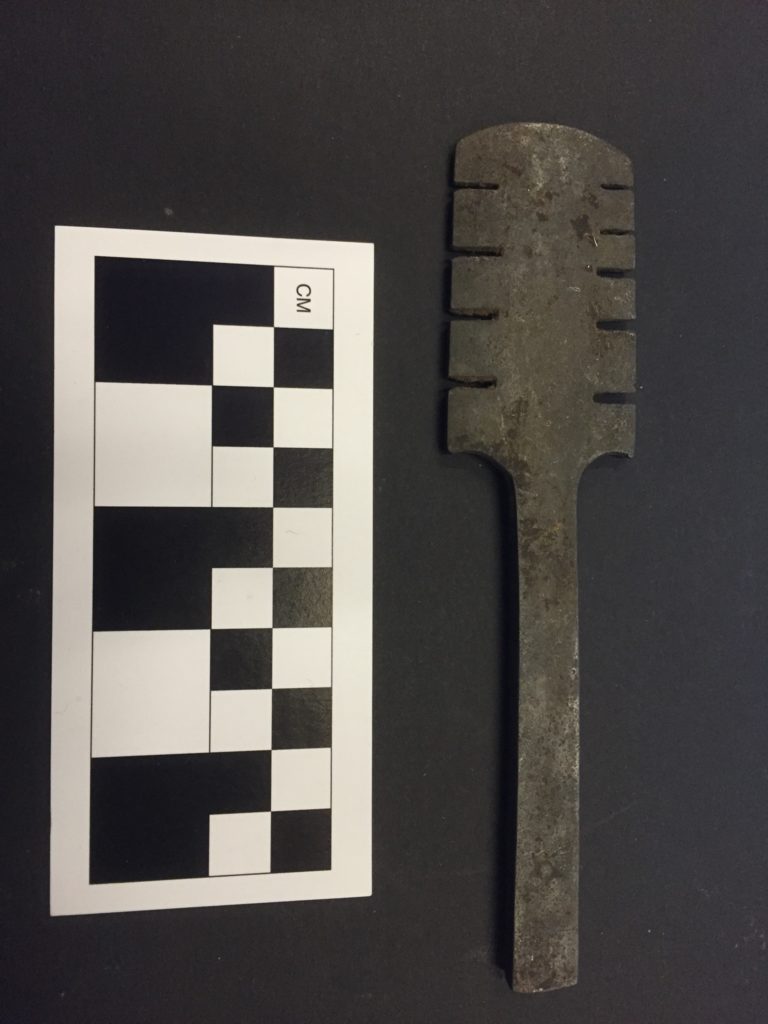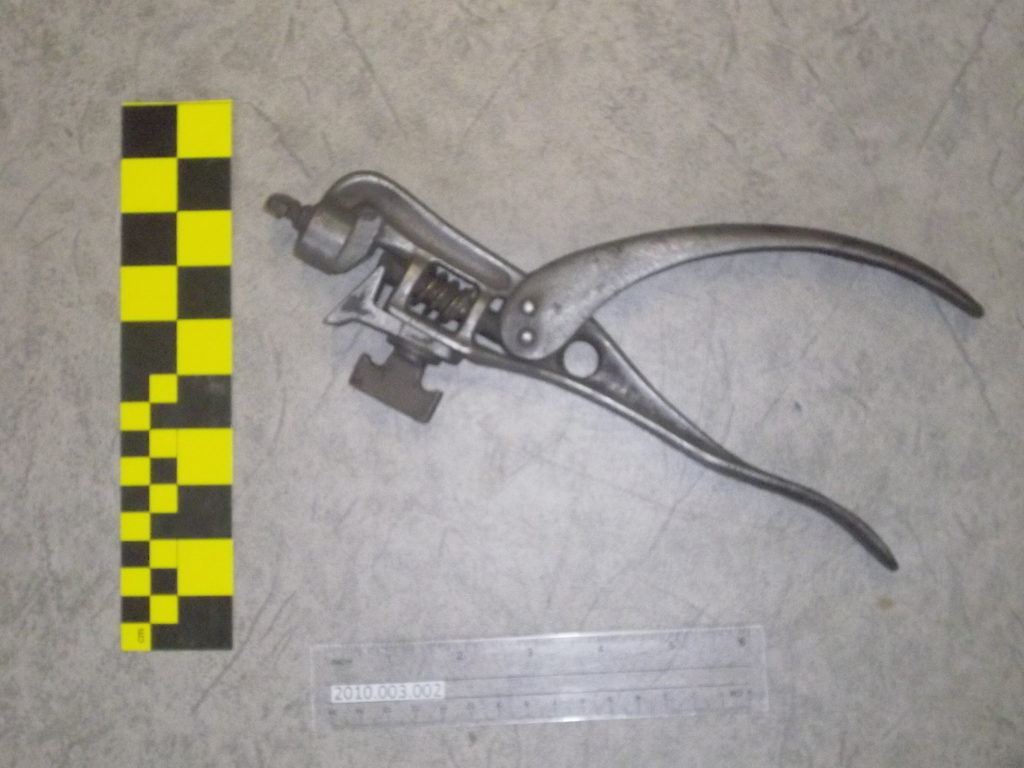Being an historian, or in my case a collections manager, does not make you all knowing about history. There are times when you will look at an item in your collections and say “What could that possibly be?”
This was the case a few weeks ago while working on a complete inventory of the museum’s collection.
In one of our tool collections we came across a small, unlabeled, metal piece that had small notches on either side. Ideas were thrown out “it could be a gauge,” “it might go with a saw,” or “maybe it’s for electrical wires” however without being a hundred percent sure we decided to do some digging. Through our research we discovered that it was a saw-wrest, modern versions are referred to as saw-sets.
In order to get the best performance out of your saw, the teeth of the saw need to be set a certain way. If the saw is a constant thickness the blade will bind or stick to the wood being cut due to friction. The saw-wrest is used to bend every other tooth away from the center of the blade. By bending the teeth in opposite directions there is less friction produced when cutting, allowing the blade to cut quickly and efficiently. Even if the blade is dull with the correct setting it will cut better than a sharp blade that hasn’t been set properly.
The saw-wrest dates back to the Romans who used iron plates with slots on both sides. The slots would be placed over the blade to bend the teeth. In the early twentieth century saw-wrests were replaced by saw-sets. The newly designed saw-set was able to provide a more uniform bend when setting the teeth creating more effective cuts. There is a lot of trial and error that goes into correctly setting a blade. Today’s blades are pre-set in factories taking out the inaccuracies of setting it by hand.
There is a similarity between managing a museum’s collection and setting teeth on a saw. Both need to be done accurately so that you can work efficiently.
Barb Holland joined the Lighthouse family in 2012 and currently works as the Collections Manager. She has a bachelor’s degree in history from Aquinas College in Grand Rapids, Michigan.



